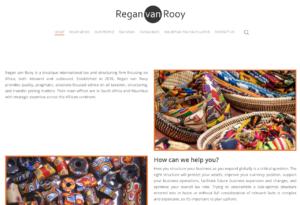Audits
Microsoft, J&J Tax Heads Divulge Tax Feud Strategies
Snapshot
• Johnson & Johnson uses software tool to keep track of business narrative and audits
• Companies should look to the future when assessing risk on tax positions: Microsoft tax counsel
Microsoft and Johnson & Johnson tax officials say companies must figure out how to tackle increased transfer pricing disputes in a global environment that is ripe with tax information overload and greater transparency between governments.
“One of the biggest elements of the largest controversies is transfer pricing, and that’s only going to get bigger rather than smaller,” Patricia Rexford, senior director of global tax disputes at Johnson & Johnson, said Sept. 20 during a webcast sponsored by KPMG LLP.
The Organization for Economic Cooperation and Development’s 2013 project to crack down on abusive tax planning from multinational companies, coupled with countries’ tax reforms, have triggered a hike in scrutiny and coordination among jurisdictions.
One initiative under the OECD’s project is country-by-country reporting, which requires companies to submit to their headquarter government a report that breaks down their tax information, including profits and the number of employees per country of operation. Tax administrations will then exchange those reports among each other, giving them greater access to company operations.
“There is a lot of uncertainty with respect to transfer pricing because the standards are changing so quickly,” Bryon Christensen, associate general tax counsel at Microsoft Corp., said during the webcast. “The trend is almost unavoidable, given country-by-country reporting, given the increased scrutiny and coordination by countries and tax authorities around the globe,” he added.
The two corporate tax officials revealed three strategies for tax departments to use in approaching transfer pricing disputes.
1. Bring Controversy and Transfer Pricing Teams Together
Multinational companies should closely link their controversy and transfer pricing teams because a majority of worldwide tax disputes involve transfer pricing.
Having a close relationship between the two is critical, Christensen said, noting that the engagement between the two teams at Microsoft is “extremely high.”
For Johnson & Johnson, the teams have historically been decentralized, but the company is moving toward a more centralized approach, Rexford said.
The head of global transfer pricing often has the same big issues on her plate as the issues on Rexford’s plate. “We are in so many meetings together. We’re practically twins,” Rexford said. “We travel as a pair.”
2. Ensure Consistency of Company Facts
The global network of tax information and transparency also puts pressure on companies to have one set of facts, Christensen and Rexford said.
Companies have to be sure they’re describing their operations, structures, and transfer pricing positions in the same way to different tax authorities. A lack of proper records could lead to misunderstandings and mistakes in audits, Christensen said.
“You can’t really tell one country something anymore with any hope or expectation that another country won’t hear about it,” Rexford said. “You really have to keep your stories straight globally at this point. If you don’t manage your controversies centrally, you’re going to trip up over yourself.”
Johnson & Johnson uses a digital tool to track and search its many controversies, including the status of audits, information document requests from tax authorities, and the company’s responses to the requests. The tools make it “much easier to maintain that consistent narrative across audit cycles and business sectors,” Rexford said.
Prior to working at Johnson & Johnson, Rexford was an outside counsel, who, during new audits, often ran into a “song and dance of, ‘OK, what did we tell them last time around about this?’ especially if it’s a transfer pricing audit,” she said.
Questions like, “who did they interview on the same topic? What did we tell them?” would arise. “And everybody would go scrambling and try to find what similar questions were asked, what similar information was given,” Rexford said.
Both Microsoft and Johnson & Johnson also hold regular quarterly meetings and have constant communication with the two teams’ various geographical regions to keep up-to-date on new audit activities or progress on current audits. Rexford calls this a “muscle memory of information flow so that people don’t sit on information.”
3. Assess Risks of Current Positions by Looking Ahead
Companies should assess the risk of their current tax positions by predicting the way they would audit their positions in the near future and consider the changing tax landscape. For U.S. multinationals, that means evaluating how the new tax code’s international provisions will impact their positions and how a potential mutual agreement procedure, which resolves double tax disputes between two or more governments, would look like.
“One of the mistakes that’s easy to make is to evaluate current audit risk of current positions based upon how tax authorities are auditing old positions,” Christensen said. “Audits are always lagging, always old years.”
Instead, a company has to forecast how its current tax positions “will be audited three years from now, four years from now, five years from now,” Christensen said. “And that’s an important perspective to take on risk assessments.”
To contact the reporter on this story: Sony Kassam in Washington at skassam1@bloombergtax.com
To contact the editor responsible for this story: Kevin A. Bell at kbell@bloombergtax.com











